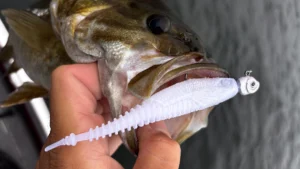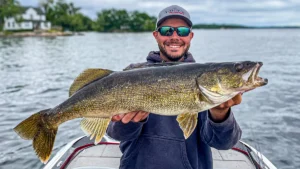Heading out fishing on new lake forces us to keep an open mind and adapt as the day unfolds. Bassmaster Opens pro Chad Smith does this in Florida on a chilly winter morning. Smith takes us on an unscripted journey of his approach to a morning bass fishing a new lake and delivers some insight along the way.
For Smith, a lot of the work starts before he puts the boat in the water. The first step is identifying new lake candidates, whether just a random “let’s try it” or word of mouth about a good bite. Reading lake survey information provides data on gamefish and key lake attributes such as water clarity. Smith always looks at high-quality aerial imagery to glean insight into water clarity, shoreline development or lack thereof, tributaries, and where structural elements lie, such as flats and steep drop-offs. Combining aerial imaging with contour lake maps helps you understand the playing field before putting the boat in.
Once on the lake, Smith assesses the time of year and what bass are doing. A solid knowledge of bass biology is essential. It’s spawning season in Florida in this video, so Smith focuses his efforts around shallow areas. Despite it being cold, he prefers starting with moving baits that allow him to fish relatively fast. He fine-tunes his tactics after catching a few bass or finding a unique spot, such as a submerged brush pile.
Fishing new water requires you to use your senses and fish finders to read what’s happening. Use the naked eye for fish-attracting subtleties like points, pockets in the grass, or areas with bottom composition changes. Bottom line: areas of change can be essential to getting a bite and figuring out a pattern.
After running through a handful of baits, Smith shifts to the sunny part of the lake as the morning unfolds. Sun can immediately impact fish activity levels by increasing the water temperature, especially during a cold front. It was a good move, and produced his first fish of the day.
There’s a lot to be learned, even during a tough bite. Just spending time on the water teaches us a lot about a lake, how to read it, and making smart decisions. Use your time wisely and fish hard. You’ll learn something new every day and become a better angler.














